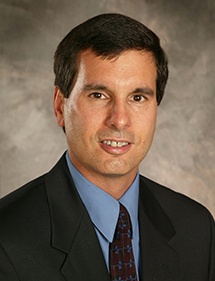Mobilized and Making it Happen

Kevin DiGregorio
Executive Director
Chemical Alliance Zone
(304) 437-4295
kevindig@suddenlink.net
“If someone wanted to make investments in the Marcellus shale region, how would they get involved?”
That was the question posed by a member of a Canadian-based private equity firm at InformEx 2014 — a chemical industry event that includes a tradeshow, conference, and networking receptions. The gentleman was attending a talk by Tom Gellrich of TopLine Analytics entitled, “Is Your Organization Mobilized for the Shale Gas Decade?”
Fortunately, Matt Ballard of the Charleston Area Alliance and I were in the audience along with Angela Mascia, Moses Zegeer, and Joshua Jarrell of the West Virginia Development Office. Matt had set the scene earlier when he asked a question that made everyone aware that West Virginia is not only in the thick of the Marcellus area but also in the heart of the Marcellus wet gas region.
That area, located in southwestern Pennsylvania and northern West Virginia, contains not only vast quantities of methane — the main constituent of natural gas that is used for home heating and electricity generation — but also large amounts of “wet gas,” including ethane.
Importantly, ethane is a key raw material for chemical manufacturing and the starting point for all the doodads that society needs (clothing, cars, and houses) and wants (golf clubs, Keurig coffeemakers, and iPads). Ethane is converted to ethylene in a “cracker.” Ethylene is then made into a host of chemicals and plastics which are formulated into all those doodads.
The audience at InformEx knew all of that, although Gellrich explained it nicely. What they maybe didn’t know, and Gellrich didn’t note until Matt Ballard brought it up, was that West Virginia is in the midst of the shale revolution and the resulting revitalization of chemical and polymer manufacturing.
In response to Matt’s query, Gellrich said something like, “Oh yeah, West Virginia has done a great job marketing its chemical facilities and attracting industry. They are one of the leaders in luring new investments to that region.”
That was good, but we needed to be more direct. The question posed by our soon-to-be friend from Canada provided the opening. “If you want to make investments in the Marcellus shale region and get involved,” I said from behind him, pointing to a spot across the hall, “please visit us at the West Virginia booth.”
He did. And so did a number of other leaders from various sectors of the chemical industry. In fact, we were a bit inundated after Gellrich’s talk, not only at the booth through the remainder of the show, but also immediately after Gellrich’s presentation. We answered questions, exchanged ideas, and swapped business cards in the conference room as if we had given the talk ourselves.
The upshot of all of this? First, there really are people and companies interested in making chemical-related investments in the Marcellus shale region. (The best example of that, of course, is Odebrecht’s announcement that they intend to build a cracker and three polyethylene plants in Parkersburg.) Second, although they are out there, you often have to go out and get them. And third, we have been going out to get them for several years now.
As an example, the 3rd Annual Marcellus to Manufacturing (M2M) Ethane Development Conference will take place March 26-27 at the Charleston Civic Center. We hope you can join us and get mobilized — or more mobilized — for the “Shale Gas Decade” that Gellrich talked about.
We are not only mobilized, we are making it happen.
